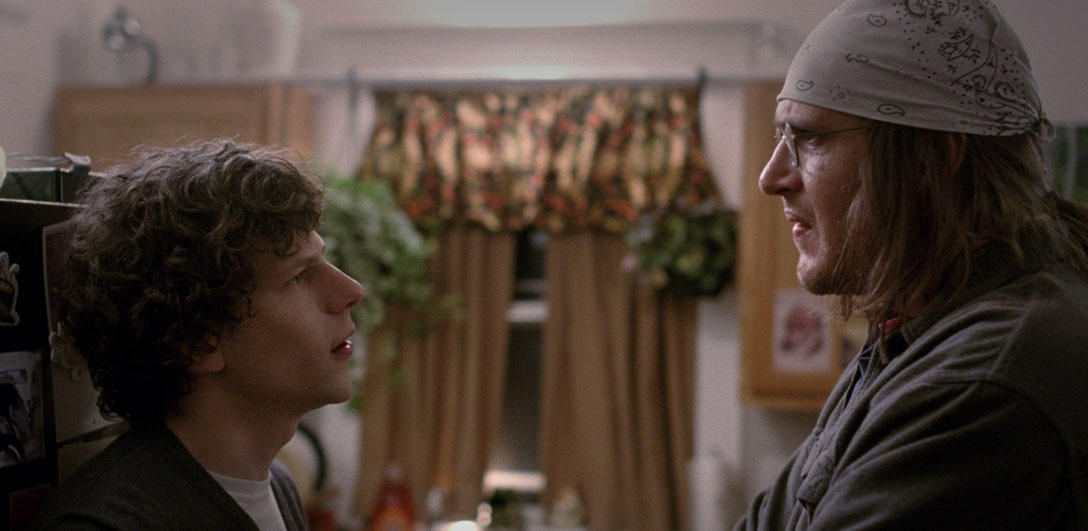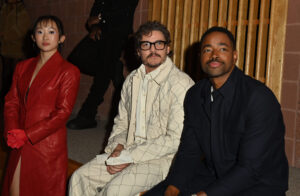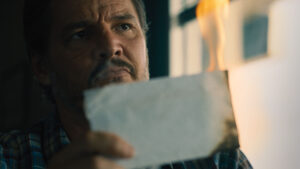Eric Hynes
Judging from conversations and Twitter activity in the moments before the world premiere screening of The End of the Tour at the 2015 Sundance Film Festival, there was as much trepidation as there was excitement about the prospect of the life of the late, great author David Foster Wallace being dramatized on film.
Yet even though the film, and actor Jason Segel in particular, made great pains to evoke Wallace’s singular way of talking, thinking, and being, it turned out that The End of the Tour is far from a biopic—it documents just a few days at the end of the author’s press tour for Infinite Jest—and rather uses writer David Lipsky’s best-selling account of his time reporting an ultimately unpublished profile of Wallace for Rolling Stone as a jumping off point for a rumination on fame, American manhood, and loneliness, among many other things.
It’s also, despite a bigger budget and stars like Segel, Jesse Eisenberg, and Joan Cusack, very much a deeply felt James Ponsoldt (Smashed, The Spectacular Now) film.
“I’m a massive David Foster Wallace fan. I read Infinite Jest as I was going into college and proceeded to read everything I could get my hands on. I had some of his writing read at my wedding, so it’s very near and dear to me,” Ponsoldt said after the film’s January premiere in Park City. “Donald [Margulies, the screenwriter] was actually my playwriting professor at college, and when he reached out and said he’d written this script, I was thrilled and very nervous to read it. And it just moved me to my core.”
“One of the things that attracted me to David Lipsky’s memoir is that to me it became a universal story of artists who struggle, and artists who achieve, and the conundrum of success when you’re an artist,” added Margulies. “The fact that it was David Foster Wallace, one of the most compelling figures of American letters of our time, was certainly a very thrilling aspect of it.But what I also saw in Dave and David, was this kind of doppelganger, two very bright, very complicated guys bumping up against each other over the course of an abbreviated period of time, and encapsulated in those days was friendship, competition, so many conflicting things about the nature of art, the publicizing of art, and how do people reconcile that?”
Though he’s better known for writing plays, Margulies said that he “felt that writing this as a two-hander for the stage would not do it justice. I was very compelled by the idea of placing David Foster Wallace, one of the great chroniclers of American culture, on the American landscape. The fact that he’s in a car, on highways, stopping for fast food, and going to the Mall of America. I thought this is just too fantastic,” he said.
To play the part, Segel said he immersed himself in all things David Foster Wallace, but that he also accessed a bit of himself. “I had access to the tapes, and I had David Lipsky’s book, I had Donald’s screenplay, and there were a lot of interviews that I got to watch and listen to, and then I read and read and read,” he said.
“I started a book club in the little town that I live in, outside of L.A., with three really great book dorks who had read Infinite Jest like 5 or 6 times. And we talked through it. One of the things that’s so special about David Foster Wallace’s writing is that he touches on some very universal human feelings, and so I tried to really pay attention to the parts of us that are the same.”




